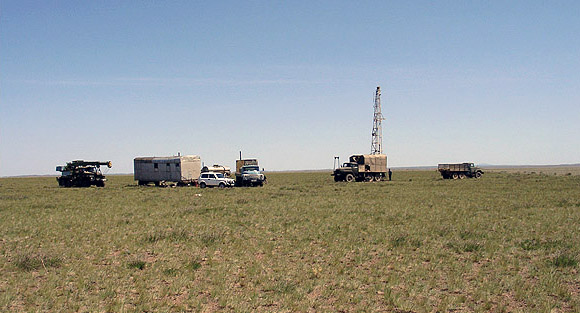
Drill rig on the Semipalatinsk Test Site in the steppe region of Kazakhstan; photo by Jürgen Höbig, Burkhard Heuel-Fabianek (Research Center Juelich)

The steppe (степь in Russian) is a dry, cold, flat grassland with no--or at the most a very few--trees. The Steppe biome is usually found between the desert and the forest. If it got more rain, it would become a forest. If it got less rain, it would become a desert.
The largest steppe zone in the world is found in Russia, stretching from Ukraine to the Ural Mountains and the Caspian Sea. The steppes then continue through Central Asia to the border with Mongolia. To the north is the taiga; to the south--desert (or the mountains).
Summers are hot and dry, and winters are cold with very little snow. The steppe can experience long droughts and windy conditions; grassfires are not uncommon in the summer due to the hot, dry conditions.
In "olden times," few people live on the steppe because it's only grass, and it was hard to grow crops. Mostly nomads with their herds of animals inhabited the steppe.